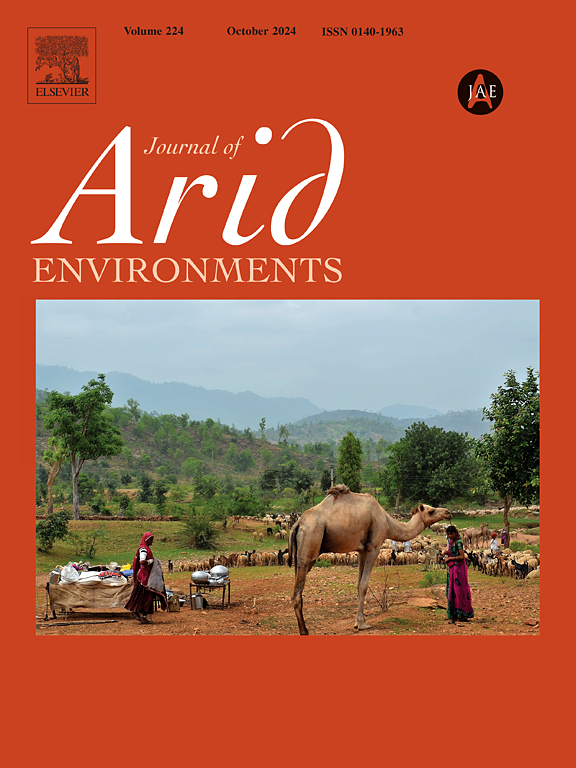Sentinel-1在草地生态系统牧草生产力监测中的潜力综述
IF 2.5
3区 环境科学与生态学
Q2 ECOLOGY
引用次数: 0
摘要
牧场是重要的生态系统,支持对牲畜和生物多样性保护至关重要的饲料生产,但由于人为压力和气候变化,它们面临着日益严重的退化。遥感技术提供了可扩展和非破坏性的手段来监测饲料生产力,光学传感器受云层覆盖和茂密植被饱和度的限制。合成孔径雷达(SAR),特别是来自Sentinel-1星座的SAR,提供全天候、高分辨率的数据,能够捕获与结构和湿度相关的植被属性。本文综述了Sentinel-1 SAR数据在评估和监测草地生态系统牧草生产力方面的潜力。它强调了最近的应用,证明了Sentinel-1在牧草生产力估计方面的有效性,以及它与Sentinel-2等光学传感器的集成,以提高监测精度。尽管具有优势,但空间分辨率限制、生态敏感性和复杂的数据处理等挑战阻碍了全面的操作部署。未来的方向强调先进的数据融合技术、机器学习方法和增强的预处理算法,以优化Sentinel-1的效用。将SAR与光学数据集相结合,有望促进可扩展、具有成本效益和可靠的牧场管理策略,支持可持续的饲料利用和生态系统恢复力。因此,政府、私营部门和非政府组织应该投资于地球观测基础设施和能力建设,将遥感转化为可操作的政策,促进可持续的牧场管理、气候变化适应和粮食安全。本文章由计算机程序翻译,如有差异,请以英文原文为准。
The potential of Sentinel-1 for monitoring forage productivity in Rangeland Ecosystems: A review
Rangelands are vital ecosystems that support forage production essential for livestock and biodiversity conservation, yet they face increasing degradation driven by anthropogenic pressures and climate variability. Remote sensing technologies offer scalable and non-destructive means to monitor forage productivity, with optical sensors limited by cloud cover and dense vegetation saturation. Synthetic Aperture Radar (SAR), particularly from the Sentinel-1 constellation, provides all-weather, high-resolution data capable of capturing structural and moisture-related vegetation attributes. This review evaluates the potential of Sentinel-1 SAR data for assessing and monitoring forage productivity in rangeland ecosystems. It highlights recent applications demonstrating Sentinel-1's effectiveness in forage productivity estimation and its integration with optical sensors like Sentinel-2 to enhance monitoring accuracy. Despite its advantages, challenges such as spatial resolution constraints, ecological sensitivity, and complex data processing impede full operational deployment. Future directions emphasize advanced data fusion techniques, machine learning approaches, and enhanced preprocessing algorithms to optimize Sentinel-1's utility. Integrating SAR with optical datasets promises to facilitate scalable, cost-effective, and reliable rangeland management strategies, supporting sustainable forage utilization and ecosystem resilience. Therefore, governments, the private sector, and NGOs should invest in Earth Observation infrastructure and capacity-building to translate remote sensing into actionable policies that promote sustainable rangeland management, climate change adaptation, and food security.
求助全文
通过发布文献求助,成功后即可免费获取论文全文。
去求助
来源期刊

Journal of Arid Environments
环境科学-环境科学
CiteScore
5.70
自引率
3.70%
发文量
144
审稿时长
55 days
期刊介绍:
The Journal of Arid Environments is an international journal publishing original scientific and technical research articles on physical, biological and cultural aspects of arid, semi-arid, and desert environments. As a forum of multi-disciplinary and interdisciplinary dialogue it addresses research on all aspects of arid environments and their past, present and future use.
 求助内容:
求助内容: 应助结果提醒方式:
应助结果提醒方式:


